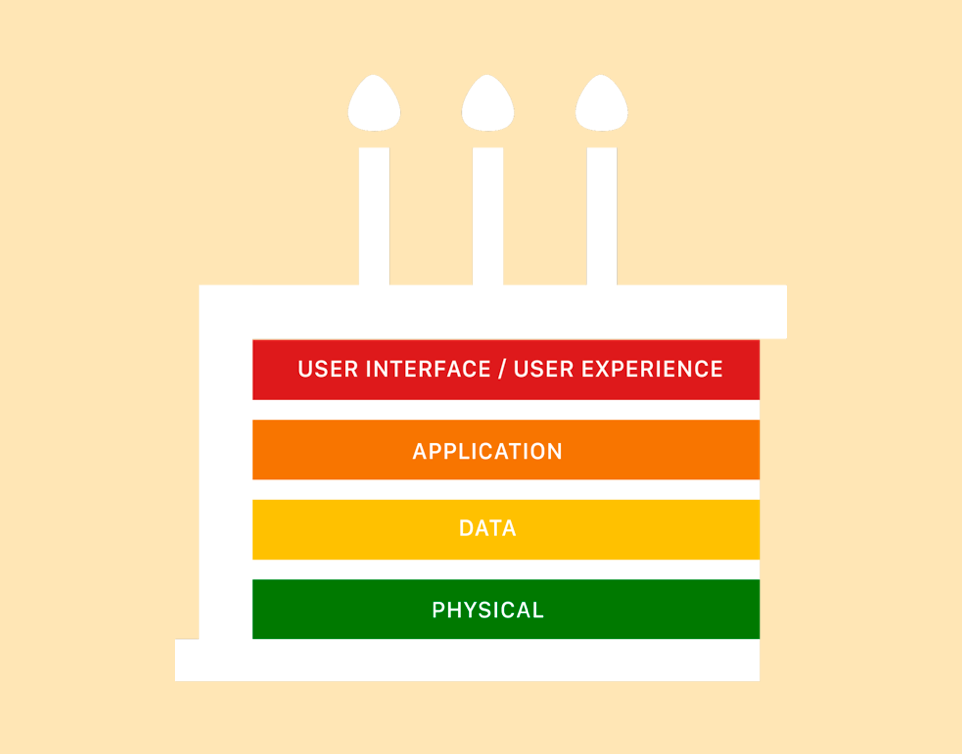Over 300 attendees gathered at the fifth annual Mixing Bowl Food IT conference for an interactive discussion of the “digital full stack solution” for new food and agriculture products and services. The Mixing Bowl’s Rob Trice set the table with a definition of the “full software stack” for food and agriculture. Noting that the full stack in IT has become pretty complex, he offered a simpler four layer “cake.”
The Physical Layer Discussion was focused on our current ability to sense, record and upload physical food and ag-related data.

Left to right: Warren Bills of Bayer Digital Farming, Cristina Davis of UC Davis, Alex Woolf of Lineage Logistics and Mike Wallace of Perfect Company
Warren Bills of Xarvio, a Bayer Crop Science digital farming company, said Xarvio’s combination of satellite imagery with local data from machine-based sensors helps farmers optimize crop protection. For example, Canadian canola growers using Xarvio can better target applications of Bayer fungicide, which cuts costs and results in overall healthier fields.
Bills said limited rural connectivity is a big issue, and also cautioned against excessive data collection without giving equal weight to analysis and decision-making.
Dr. Cristina Davis, Director of the Bioinstrumentation and BioMEMS Lab at UC Davis, has developed sensors for rapid diagnosis of animal diseases and detection of chemicals and biologics. She said one barrier to wide deployment of hi fidelity sensors is their high power usage, but that edge computing is a possible solution.
Alex Woolf of Lineage Logistics, a major cold chain logistics company, said IOT of temperature and motion sensors has helped them reduce labor and energy costs. Application to supply chain management has great potential, but has been lacking, and illustrated his point with squid. After too many unannounced deliveries of tons of squid, Lineage retained a squid marine biologist on their data science team to improve supply chain intelligence.
The Data Layer Discussion focused on whether food and ag-related data is flowing freely between parties.
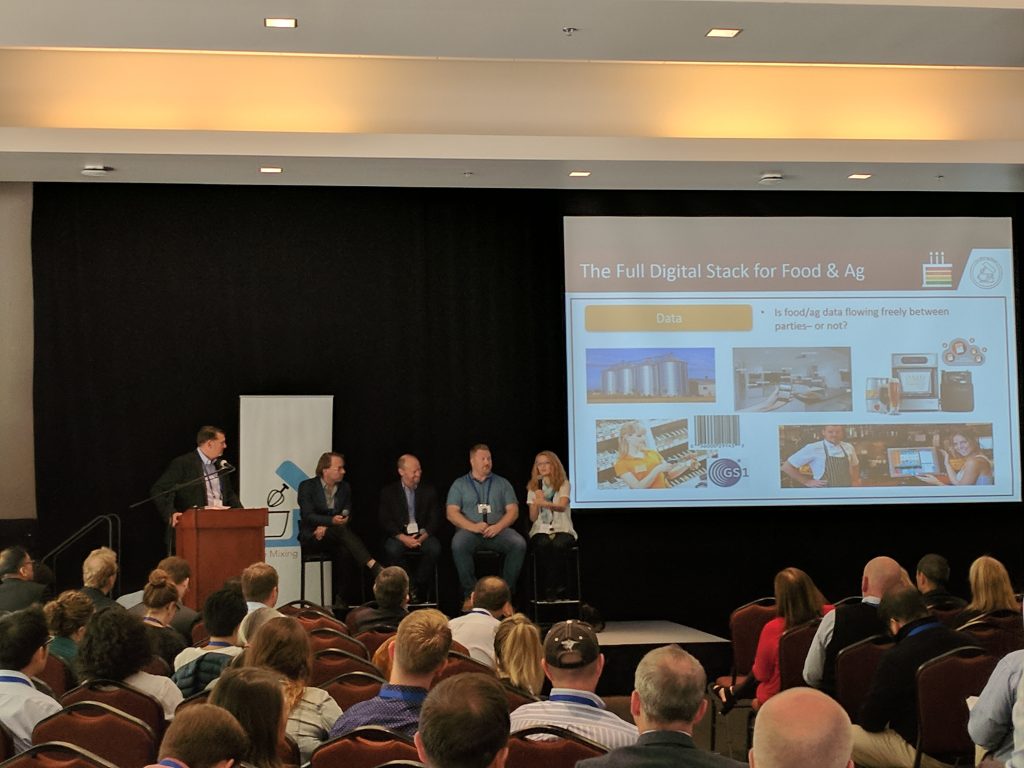
Left to right: Matthew Lange of UC Davis, Paul Schaut of Label Insight, Curtis Garner of Bowles Farming and Daniela Barile of UC Davis
Dr. Matthew Lange, food scientist and PI of IC-FOODS at UC Davis talked about the task of developing a common language for ag, food, and health and the data exchange platforms for an Internet of Food, which requires both “top down” and “bottom up” solutions.
Paul Schaut, CEO of Label Insight, a platform for consumer product data, said that companies understand how critical transparency is for customer trust and loyalty and want to provide more data. He believes blockchain can bring together disparate data sets and lead to digital labels that will replace the GDSN barcode standard. A “triple tsunami” of consumer demand for transparency – climate change, “food as medicine,” and e-commerce – will create the momentum for the transition.
UC Davis food scientist Dr. Daniela Barile discussed her research on milk bioactive compounds and the user friendly standardized database she developed for them. She noted how there are many available metabolomics databases, but most are neither standardized nor integrated, which can undermine our ability to further the field of metabolomics.
Curtis Garner, Senior Data Analyst for Bowles Farming, said the industry needs a standard evapotranspiration model to support sensors. Currently, there is a risk for bad data from incorrectly calibrated sensors. He noted increased demand from millenials and consumers in China for certified products and that this will drive data standards. These consumers want the story behind the product, and standardized data allows this. Curtis also confirmed that data on the farm is siloed. They use 33 different management consoles to manage data.
The App Layer Discussion focused on what food/ag functions, tasks or activities can be done through technology.
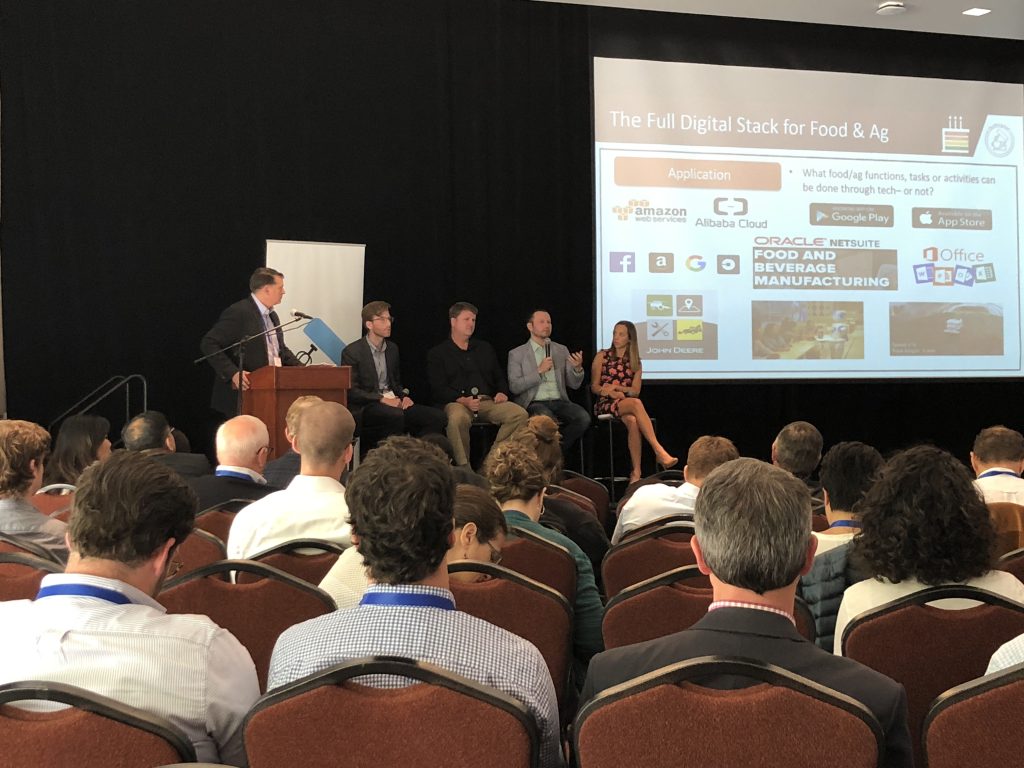
Left to right: Andrew Cohen of Bayer Tech and Ventures, Kevin Brown of Innit, Alexey Rostapshov of Deere & Co, and Jenny Hebets of Mars
Jenny Hebets, Business Development and External Innovation Manager for Mars, said a key shift is from a mass to individualized market, and that the industry needs better data to support the shift. She discussed the data gaps Mars has in its confection business because many transactions occur in retail locations where Mars has no access and/or are cash purchases, so there is limited data Mars can draw off to better understand its customers.
Alexey Rostapshov, Head of Digital Innovation at John Deere Labs, said their goal is to optimize the operation of their machines using on-board data. Combines for example, have many on-board sensors and cameras, and the key is to use only the most important data.
Andrew Cohen of Bayer Tech and Ventures said that access to consumer physical and metabolic data will enable companies like Bayer to better serve them, for example, to gauge response of patient’s microbiome to certain nutrients and medications.
Finally, the UI/UX Layer Discussion focused on how technology is changing the way consumers or producers interface with food production and consumption
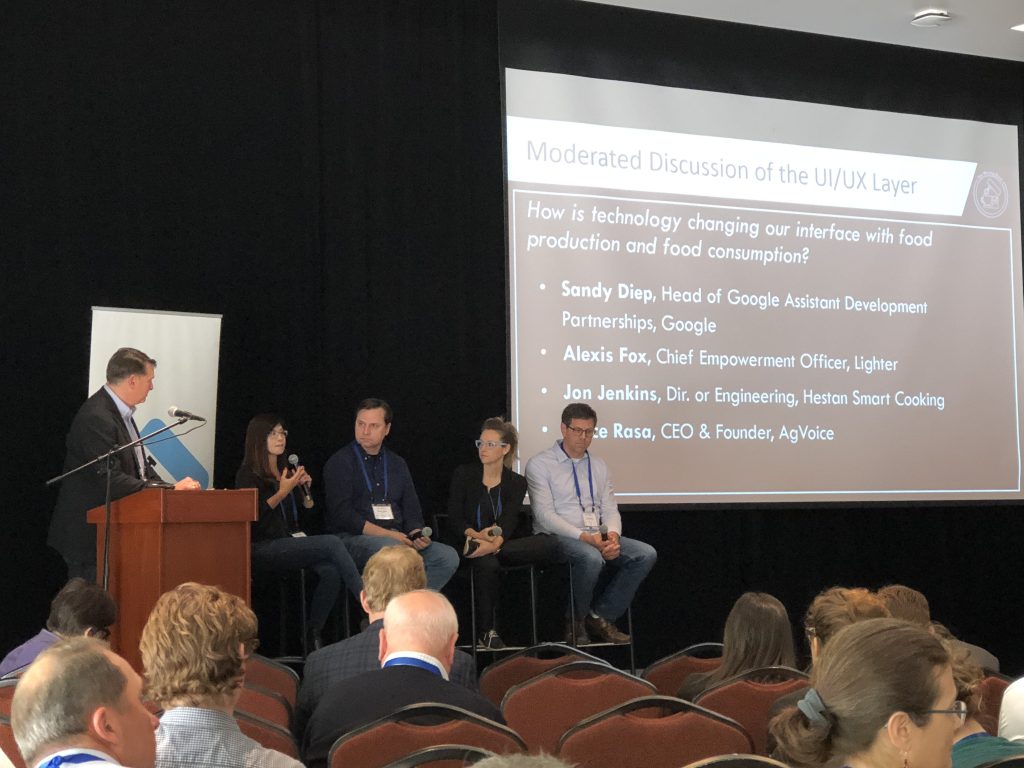
Left to right: Sandy Diep of Google, Bruce Rasa of AgVoice, Alexis Fox of Lighter, and JJ Jenkins of Hestan
Sandy Diep, Head of Google Assistant Development, said that the convergence of AI, machine learning and natural language processing is improving Google Assistant, but they also realize the need to engage users in co-development. Kids like using Assistant in the kitchen, but Google had to introduce polite mode after kids got used to being bossy with Assistant and used the same language with mom and dad.
John Jenkins, Director of Engineering at Hestan Smart Cooking, described how video provides the best user interface for recipe execution. Alexis Fox of Lighter likewise said video, along with personal inspiration from celebrities and Lighter’s personalized data options, can change behavior for better health.
Bruce Rasa, CEO and Founder of AgVoice, a mobile voice-driven service for in-field data capture and workflow management, described how the company is making the plant breeding process more efficient in the field. He noted that interfaces must be user friendly and make life immediately easier for the user.
Attendees then broke out into 15 Deep Dive Interactive Breakout Sessions to continue the discussions, listed below:
Beyond VC: Financing Alternatives for Food/AgTech
Key Elements of a Regional Innovation Ecosystem
Making Incubators & Accelerators Work for Food & Ag
Serving up Tech in Restaurant & Food Service
Getting Personal with Food & Nutrition
Making a Connection in the Connected Home Kitchen
Making Seafood Tech Swim not Sink
What’s Your Gut on Our Scope of the Microbiome?
Will Blockchain Accelerate Supply Chain Transparency?
Separating the Milk from the Cream in Dairy & Livestock Tech
How can Tech help Regenerative Food & Ag?
Will corporate VCs grow big in Food & Ag?
Prepping Tech to help School Food get a Passing Grade
Broadening Local Food with Tech
Promoting Appropriate Tech for Smaller Food Producers
Moving the Plant-forward Diet Forward
Bio-informatics & Gene Editing Tech
Controlling Indoor Ag at Scale
What is Special about Specialty Crop Tech?
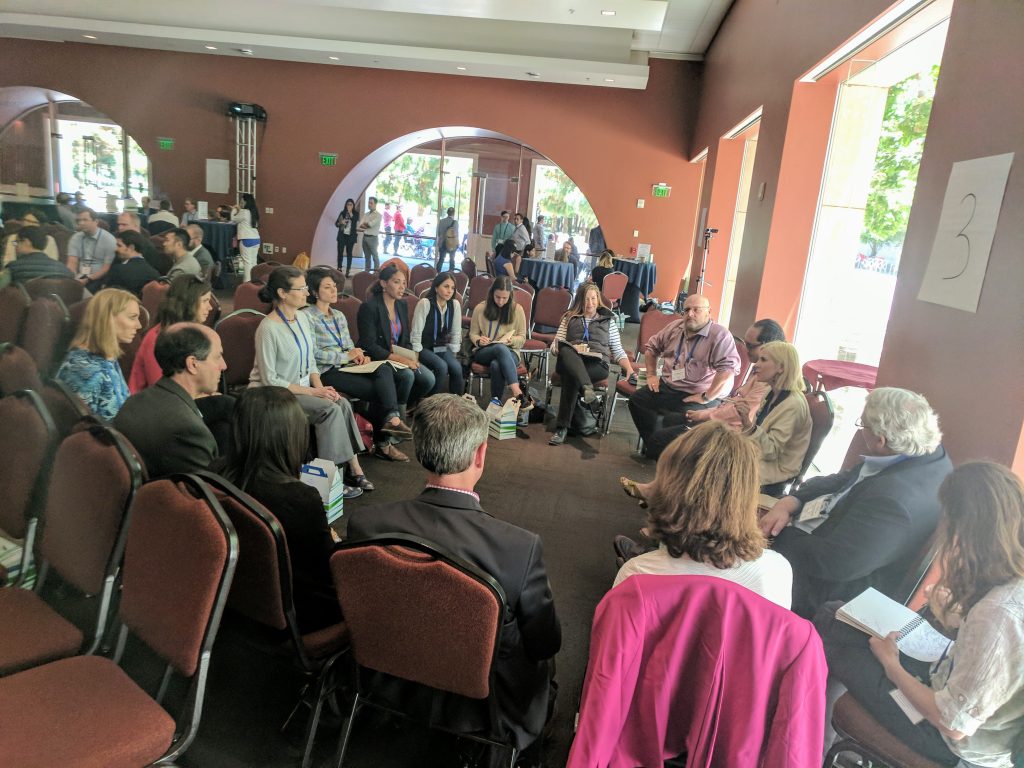
And the event was closed with a little competitive fun via The Blender Pitch Competition.

The EIO Diagnostics team with their Golden Blender prize.
Six innovative companies in food/agtech – Shelf Engine, Ganaz, Kiwi Campus, EIO Diagnostics, Bottlefly, and ShenNong – competed for the much sought after Golden Blender. This year EIO Diagnostics emerged as the winner with their multispectral imaging solution for early detection of bovine udder infections. They were then listed by Forbes as a top 25 ag tech company for 2018 . It was a great week for our friends at EIO Diagnostics and for agtech and foodtech as a whole.
About the author: Leanna Sweha is an attorney with an agtech background who has worked for the California Legislature, the California Resources Agency, and the UC Davis Office of Research. She is passionate about promoting new sustainable agriculture companies.

